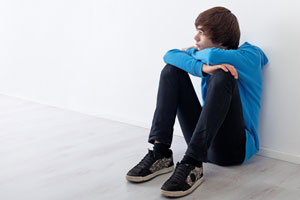YOUTH mental health services are appealing to males, a previously hard to reach group, according to research from two centres.
A study published in the latest MJA, which looked at young people (aged 12–25 years) presenting to two headspace youth mental health services between October 2007 and October 2009, found more than half (53%) of those presenting were males. (1)
The pattern was consistent across all ages, according to the researchers, who studied attendees of the two services — one in inner Sydney and another in Campbelltown in Sydney’s south-west.
The study authors said young men had been a particularly hard group for mental health services to reach. In 2007, only 13% of young men with a mental disorder or alcohol or substance misuse received any mental health care, compared with 31% of young women, they said.
In 2006, the Australian Government launched headspace: the National Youth Mental Health Foundation to provide new pathways to mental health care for Australians aged 12–25 years.
The study authors said their data demonstrated that well designed youth mental health services could directly attract large numbers of young people.
“Unlike many other primary care or specialist mental health services, young men constituted over half of those presenting for care [at the headspace centres]”, the authors wrote.
Professor Jon Jureidini, a child psychiatrist at the Women’s and Children’s Hospital in Adelaide, said it was encouraging that the study showed a higher rate of boys coming to the service. “That’s a positive thing”, he said.
However, he said he would have liked to see more data included in the study, such as how many times they attended, what treatment they received and what they thought of the treatment.
He said the number of those with drug and alcohol issues attending the service seemed low.
Professor Patrick McGorry, executive director of Orygen Youth Health Research Centre and headspace board member, said it was significant that young men were prepared to “seek help and engage”.
He attributed this to the level of youth participation in the headspace model. “Every centre has to have young people involved to make sure the design and décor and work practices are youth friendly, to ensure that young people have a voice”, he said.
Under the headspace program, young people can be referred by GPs, paediatricians, schools, welfare agencies, family, friends or through self-referral.
Of the young people studied, 40% were self-referrals or referrals through family members or friends. The authors wrote that this relatively high rate was “remarkable”.
They said although most of the young people studied, both male and female, were in the early stages of illness, their disability levels were already pronounced.
Almost 70% had “high or very high” levels of psychological distress, while 63% said they had 2 or more days of being unable to function in the past month. A quarter received income support, with the same fraction completely disconnected from employment or education, according to the study.
“This shows it’s not the worried well who are using the service. These young people are really struggling”, Professor McGorry said.
– Amanda Bryan
Posted 6 February 2012

 more_vert
more_vert